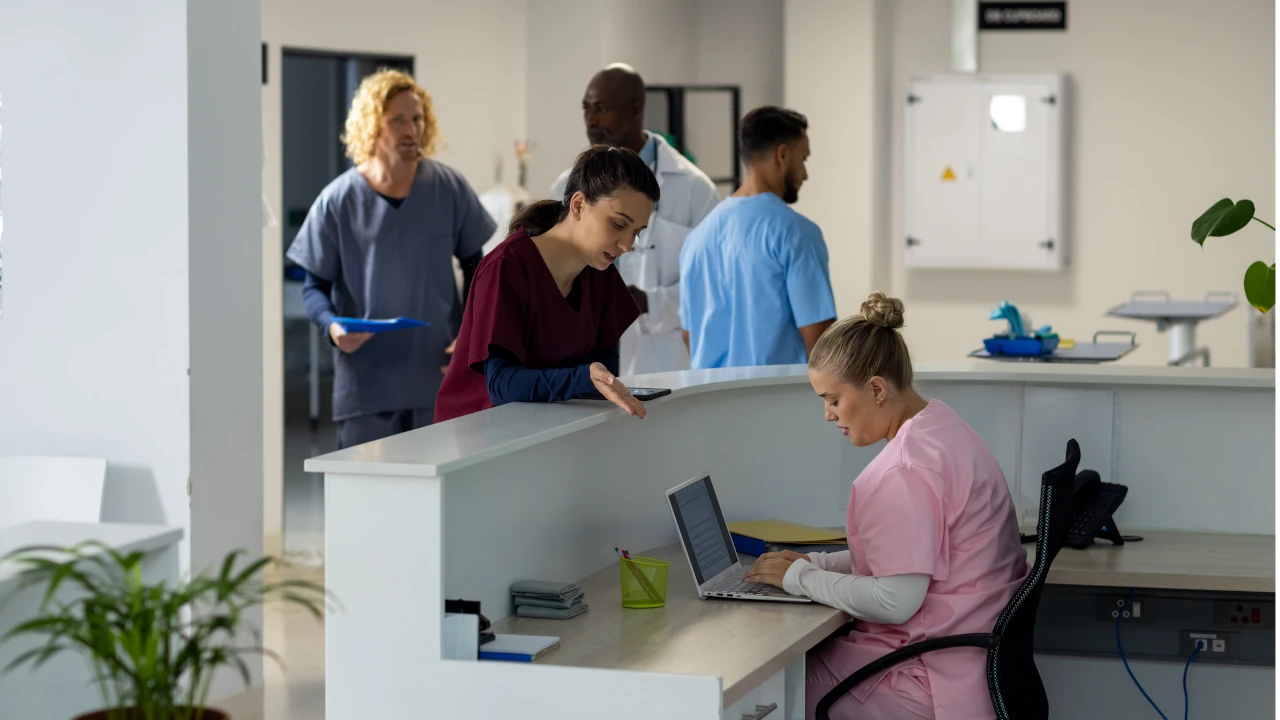Amidst the evolving landscape of healthcare delivery, Remote Patient Monitoring (RPM) has emerged as a transformative tool for enhancing patient care and optimizing operational efficiency. At the heart of effective RPM implementation lies the intricate realm of RPM billing, presenting healthcare facilities with both challenges and opportunities.
In this article, we delve into the complexities of RPM billing in healthcare facilities, exploring the hurdles faced and the potential avenues for growth and revenue optimization. From deciphering RPM billing codes to navigating regulatory hurdles and leveraging innovative strategies, healthcare providers must navigate a multifaceted landscape to unlock the full potential of RPM billing. Join us as we unravel the nuances of RPM billing and uncover strategies for success in this dynamic and rapidly evolving domain.
Understanding RPM Billing: A Comprehensive Overview
RPM billing encompasses a wide array of services and codes, each requiring meticulous attention to detail for accurate documentation and billing. Understanding the nuances of RPM billing codes is paramount for healthcare facilities to ensure compliance with regulatory standards and optimize revenue streams. With the proliferation of remote patient monitoring technologies, healthcare providers must navigate the complexities of RPM billing to maximize financial viability and operational efficiency.
Deciphering RPM Billing Codes
Deciphering RPM billing codes requires a deep understanding of the specific services rendered during remote patient monitoring, encompassing initial setup, ongoing monitoring, and patient communication. Healthcare facilities must stay abreast of updates and revisions to RPM billing codes issued by regulatory bodies to ensure accurate documentation and billing practices. By adhering to RPM billing codes diligently, healthcare providers can avoid compliance pitfalls and secure optimal reimbursement for services rendered.
Overcoming Regulatory Hurdles
Navigating the regulatory landscape surrounding RPM billing demands proactive compliance strategies and a keen understanding of evolving healthcare policies. Healthcare facilities must invest in robust compliance frameworks to mitigate regulatory risks and ensure adherence to stringent billing requirements. By fostering a culture of regulatory compliance, healthcare providers can navigate regulatory hurdles effectively and safeguard their financial interests.
Leveraging Technology for Seamless Integration
Leveraging technology is essential for healthcare facilities to streamline RPM billing processes and optimize revenue cycles. Integrated Electronic Health Record (EHR) systems and RPM platforms offer advanced functionalities for seamless documentation, billing, and reimbursement management. By harnessing technology-driven solutions, healthcare providers can enhance operational efficiency, reduce administrative burdens, and maximize revenue potential from RPM services.
Addressing Reimbursement Challenges
Reimbursement complexities pose significant challenges for healthcare facilities seeking to maximize revenue from RPM services. Healthcare providers must navigate payer policies, reimbursement models, and billing guidelines to optimize reimbursement rates and minimize revenue leakage. To effectively tackle these challenges, healthcare facilities can:
- Implement clear documentation practices: Ensuring thorough and accurate documentation of RPM services provided is crucial for securing reimbursement and avoiding claim denials.
- Stay updated on regulatory changes: Regularly monitoring updates to payer policies and regulatory guidelines enables healthcare providers to adapt their billing practices accordingly.
- Utilize coding specialists: Employing coding specialists proficient in RPM billing codes can help streamline the billing process and minimize coding errors.
- Leverage data analytics: Analyzing patient data and billing trends can provide valuable insights for optimizing reimbursement rates and identifying areas for revenue enhancement.
- Optimize revenue cycle management: Implementing efficient revenue cycle management strategies, such as timely claims submission and proactive claims follow-up, can expedite reimbursement processes and minimize revenue cycle gaps.
By implementing these strategies and leveraging data-driven insights, healthcare facilities can navigate reimbursement challenges effectively and enhance their financial performance in RPM billing.
Capitalizing on Revenue Opportunities
Amidst the challenges of RPM billing, healthcare facilities have the opportunity to capitalize on substantial revenue potential. By optimizing billing processes, enhancing documentation accuracy, and leveraging technology-driven solutions, healthcare providers can unlock new avenues for revenue growth and financial sustainability. Proactive revenue optimization strategies enable healthcare facilities to maximize revenue generation from RPM services while delivering high-quality patient care.
Embracing Innovation in RPM Billing
Innovation serves as a catalyst for overcoming challenges and unlocking transformative opportunities in RPM billing for healthcare facilities. Forward-thinking providers are embracing innovative strategies to enhance billing efficiency, drive revenue optimization, and deliver superior patient care.
Harnessing Predictive Analytics
Predictive analytics offers valuable insights for optimizing RPM billing practices and maximizing revenue potential. By analyzing patient data, healthcare facilities can identify trends, predict future healthcare needs, and optimize resource allocation for enhanced billing accuracy. Harnessing predictive analytics empowers healthcare providers to proactively manage patient populations, improve clinical outcomes, and drive revenue growth in the rapidly evolving healthcare landscape.
Embracing Value-Based Care Models
The shift towards value-based care models emphasizes the importance of proactive patient management and holistic healthcare delivery. RPM billing aligns seamlessly with value-based care initiatives, enabling healthcare facilities to prioritize patient outcomes while optimizing financial performance. By embracing value-based care models, healthcare providers can enhance patient engagement, improve care coordination, and drive cost-effective healthcare delivery while maximizing revenue from RPM services.
Fostering Collaborative Partnerships
Collaborative partnerships between healthcare providers, technology vendors, and payers are instrumental in driving innovation and overcoming RPM billing challenges. By fostering synergistic relationships, stakeholders can co-create tailored solutions that address evolving industry dynamics and unlock new revenue streams. Collaborative partnerships enable healthcare facilities to leverage technology advancements, regulatory expertise, and industry insights to navigate the complexities of RPM billing effectively and drive sustainable growth.
Key benefits of collaborative partnerships:
- Access to specialized expertise: Partnering with technology vendors and industry experts provides healthcare facilities with access to specialized knowledge and resources, facilitating the development and implementation of innovative RPM billing solutions.
- Enhanced resource sharing: Collaborative partnerships allow for the sharing of resources, such as infrastructure, technology platforms, and best practices, optimizing operational efficiency and reducing costs.
- Risk mitigation: By pooling resources and expertise, collaborative partnerships help mitigate risks associated with RPM billing, such as regulatory compliance issues, technology challenges, and market volatility.
- Opportunity for co-creation: Partnering with stakeholders across the healthcare ecosystem enables co-creation of tailored solutions that address specific challenges and opportunities in RPM billing, ensuring alignment with organizational goals and objectives.
- Expansion of market reach: Collaborative partnerships facilitate access to broader networks and market channels, enabling healthcare facilities to expand their reach and attract new patients, clients, and customers.
By fostering collaborative partnerships, healthcare facilities can harness the collective expertise, resources, and capabilities of industry stakeholders to drive innovation, overcome challenges, and achieve sustainable growth in RPM billing.
Navigating the Challenges and Seizing the Opportunities with DrKumo RPM Solution
DrKumo’s RPM (Remote Patient Monitoring) solution is designed to address the complexities of and capitalize on the opportunities in RPM billing within healthcare facilities. By offering a robust, user-friendly platform, DrKumo helps healthcare providers navigate the technological and regulatory challenges of RPM. The solution integrates seamlessly with existing healthcare systems, including electronic health records (EHR), to streamline the billing process and improve operational efficiency.
DrKumo’s technology facilitates enhancing patient care through timely and informed decision-making. This leads to improved patient outcomes and potentially increases the financial performance of healthcare facilities by optimizing billing processes and opening new revenue streams. Furthermore, DrKumo prioritizes compliance with healthcare regulations, ensuring that the billing for RPM services meets all legal requirements.
By implementing DrKumo’s RPM solution, healthcare facilities can overcome the hurdles of technology adoption and staff training. DrKumo provides comprehensive support and training, ensuring that the healthcare facility’s staff are well-equipped to use the RPM system effectively. This support extends to managing the billing process, making it more efficient and less prone to errors.
Takeaways
RPM billing presents both challenges and opportunities for healthcare facilities seeking to enhance patient care and optimize financial performance. By embracing innovation, leveraging technology-driven solutions, and adopting a proactive approach to regulatory compliance, healthcare providers can navigate the complexities of RPM billing and unlock sustainable growth in the dynamic healthcare landscape.
As the healthcare industry continues to evolve, healthcare facilities must remain agile and adaptable to emerging trends and regulatory changes in RPM billing. By investing in ongoing education, training, and technology infrastructure, healthcare providers can position themselves for success in the rapidly evolving landscape of remote patient monitoring.
Enhance patient care, streamline operations, and stay ahead of technological and policy advancements. Contact us today!
Disclaimer: This article is for informational purposes only. It is not intended as legal, financial, or medical advice. The information provided reflects the current understanding and interpretations of the subject matter, which may change over time.








